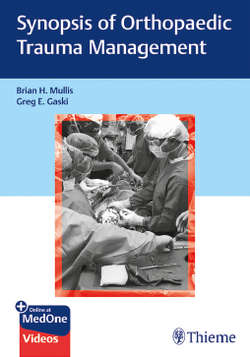Читать книгу Synopsis of Orthopaedic Trauma Management - Brian H. Mullis - Страница 30
На сайте Литреса книга снята с продажи.
I. Specific Reduction Techniques and Principles of Casting and Splinting
ОглавлениеA. Nondisplaced fractures
1. Almost all nondisplaced fractures can be treated nonoperatively with the exception of the femur and some unusual conditions.
2. The methods of immobilization include: slings, splints, casts, traction, or simply avoiding weight-bearing through the limb.
3. Immobilization will allow secondary bone healing to take place and function to return by 6 weeks to 3 months depending on the bone.
B. Displaced fractures
1. Trauma strong enough to cause a fracture will cause surrounding soft tissue injury including periosteal disruption.
2. Bones are attached to muscles which contract, shorten, angulate, and rotate fracture fragments.
a. The fracture will often heal in the displaced position but the deformities that result may leave the limb or patient compromised and potential loss of function.
b. Most displaced fractures should be reduced to minimize deformity and soft tissue complications, including those that ultimately require operative fixation.
c. Splints provide initial stabilization of displaced fractures. They should allow for swelling and all bony prominences should be adequately padded.
C. Indirect or closed reduction of fractures
1. Adequate analgesia and muscle relaxation are critical for success.
a. Hematoma block—aspirate hematoma and place 10 cm3 of lidocaine at fracture site.
i. May be less reliable than other methods.
ii. Fast and easy.
b. Intravenous sedation:
i. Versed (0.5–1 mg q 3 minutes up to 5 mg).
ii. Morphine (0.1 mg/kg).
iii. Demerol (1–2 mg/kg up to 150 mg).
iv. Beware of pulmonary complications with deep conscious sedation—consider anesthesia service assistance if there is concern.
v. Physician should be credentialed for “conscious sedation.”
vi. Pulse oximeter and careful monitoring are recommended.
c. Bier block—It results in superior pain relief, greater relaxation, and less premedication is needed.
i. Double tourniquet is inflated on proximal arm and venous system is filled with local.
ii. Lidocaine is preferred for fast onset.
iii. Volume = 40 cm3.
iv. Adults: 2–3 mg/kg, children: 1.5 mg/kg.
v If tourniquet is deflated after < 40 minutes then deflate for 3 seconds and reinflate for 3 minutes—repeat twice.
vi. Watch closely for cardiac and neurologic side effects, especially in the elderly patients.
2. Reduction is accomplished by some form of traction and force directed against the deformity to correct the length, alignment, and rotation of the bone and it may be specific for fracture location and pattern.
a. Reduction may require reversal of mechanism of injury, especially in children with intact periosteum.
b. When the bone breaks because of bending, the soft tissues disrupt on the convex side and remain intact on the concave side.
c. Longitudinal traction may not allow the fragments to be disimpacted and brought out to length if there is an intact soft-tissue hinge (typically seen in children who have strong periosteum that is intact on one side).
d. Reproduction of the mechanism of fracture to hook on the ends of the fracture angulation beyond 90 degree is usually required.
3. Immobilization:
a. Fractures must be immobilized to include the joint above and below.
b. Maintain the position of the bone fragments to the point of healing.
c. Use splints initially to accommodate for potential swelling.
d. Three-point contact (mold) is necessary to maintain closed reduction.
e. Cast must be molded to resist deforming forces.
4. Cast padding:
a. Roll the padding distal to proximal.
b. Use 50% overlap.
c. Four layers minimum.
d. At bony prominences, use extra padding: fibular head, malleoli, patella, and olecranon.
5. Plaster versus fiberglass:
a. Plaster is better for molding, use cold water to maximize molding time.
b. Fiberglass is more difficult to mold but is more durable and 2 to 3 times stronger. It is also more resistant to breakdown.
c. Width of roll: 6 inch for thigh; 3 to 4 inch for lower leg; 3 to 4 inch for upper arm; and 2 to 3 inch for forearm.
